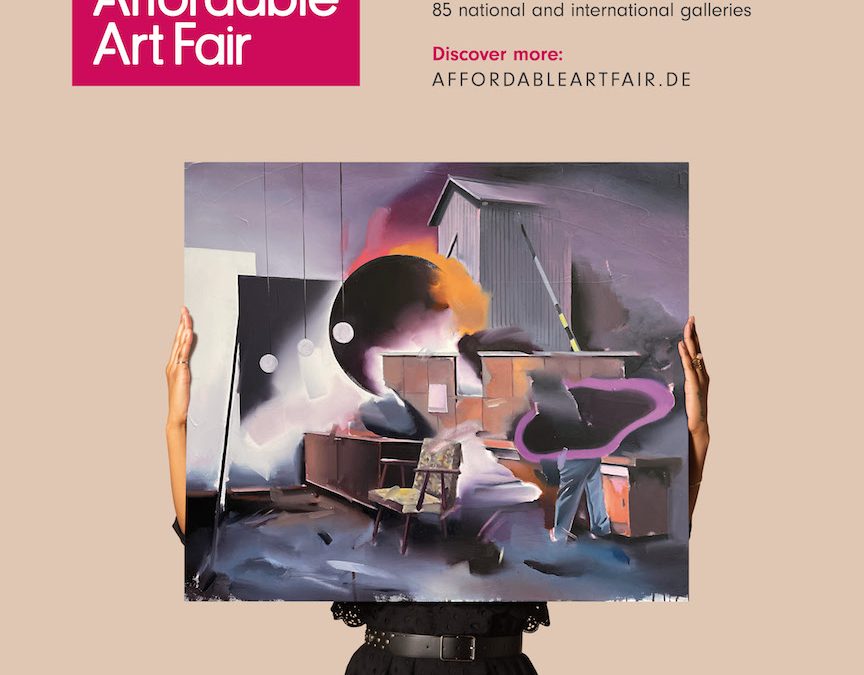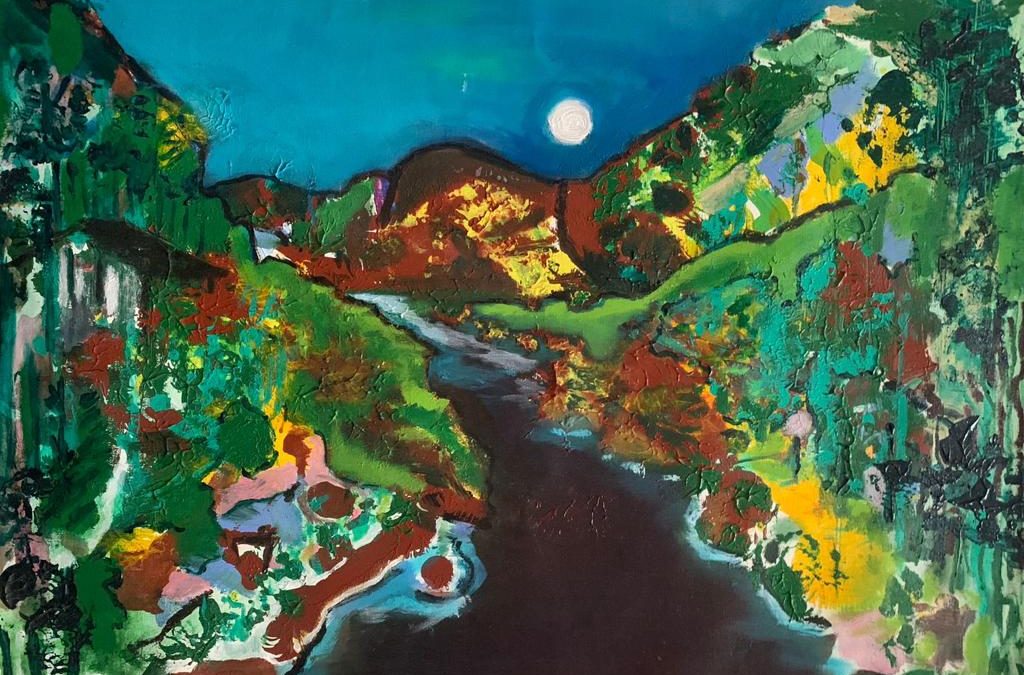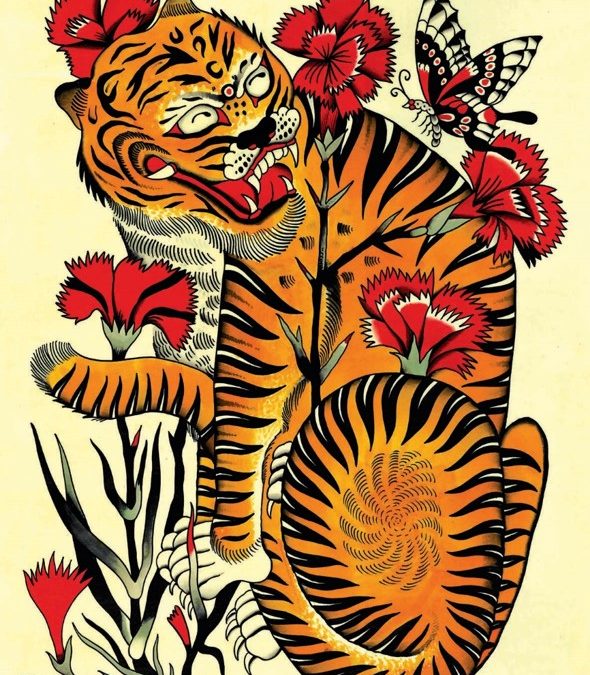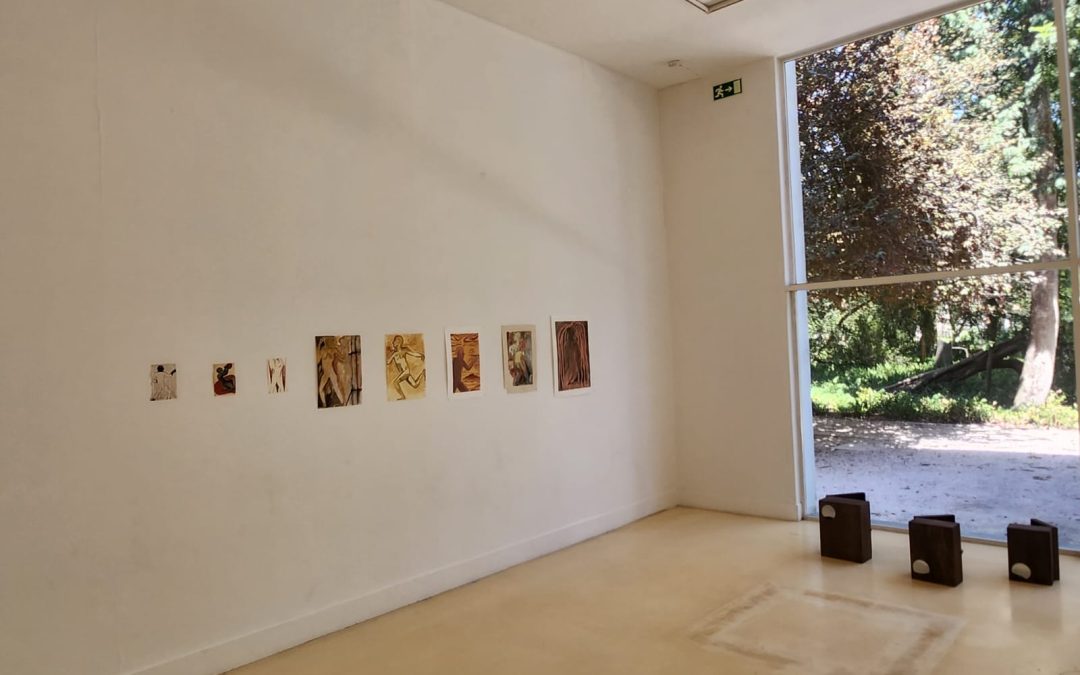
by Stephanie Wruck | Feb 6, 2024 | Article, Emphasis, Events
Yellow Collective at the Affordable Art Fair in Brussels
After participating in the editions of the Affordable Art Fair in Amsterdam and Hamburg in 2023, Coletivo Amarelo will be present in the Brussels edition in 2024. The fair opens on the day February 7th and extends until the 11th. The Affordable Art Fair features a range of local and international galleries that will showcase thousands of contemporary works of art at affordable prices. Among the artists who will be exhibited at the fair are Flavia Regaldo, Gabriela Albuquerque, Juliana Matsumura, Natália Loyola, Veridiana Leite and Eduardo Dias.
5 galleries to see this year at the fair!
Affordable Art Fair
The first edition of the Affordable Art Fair took place in Battersea Park, in London, in October 1999. At first, the fair had an audience of 10 thousand people interested in buying art. These include original contemporary paintings, sculptures, photographs and prints in a relaxed and friendly atmosphere.
After all these years, the Affordable Art Fair takes place in more than 10 cities around the world, including London, New York, Hong Kong, Hamburg, Amsterdam, Brussels, Singapore, Stockholm, Melbourne and Sydney, with two new fairs to open coming soon to Shanghai and Berlin.
In each of its editions, the fair welcomes thousands of art enthusiasts and provides a wide variety of art. They feature established and emerging artists in a mix of local, national and international galleries with affordable artwork.
The Affordable Art Fair is an opportunity to discover emerging artists and galleries at an affordable price. It encourages the democratization of art and its consumption.
The vernissage takes place on February 7th between 5pm and 10pm. For more information about fair times, visit the fair's website Affordable Art Fair!

by Stephanie Wruck | Jan 31, 2024 | Emphasis, Events
Friday, February 2nd at 3pm, guided tour + screening of the film “Ongoing Cave” by Julián D'Angiolillo.
It is a great honor for us to be in partnership with the Geological Museum of Lisbon to carry out a guided tour and screening of the film inside the museum. The visit is part of the program of events during the exhibition SKIN OF THE EARTH, opened on January 20th. The exhibition brings together the work of artist Natália Loyola in her first solo exhibition. Inside the small gallery, metal engravings by Flavia Regaldo create a dialogue with the installations. Curated by Sofia Steinvorth.
The objective is to observe how the exhibition can develop beyond the gallery, creating other spaces for dialogue about our relationship with the earth.
Ongoing Cave (2023), brings underground landscapes, proposing reflections related to human activity on the surface of the earth. Caves operate as omnipresent phenomena, bringing scientific and philosophical investigations.
Special thanks to the National Energy and Geology Laboratory.

by Stephanie Wruck | Jan 11, 2024 | Article, Emphasis, Events
SCHEDULE THIS DATE: Opening on January 20th, from 6pm to 9pm.
A PELE DA TERRA marks the first solo exhibition by artist Natalia Loyola. The exhibition debuts three new installations and explores the development and constitution of the elements that make up what she calls “the skin of the earth”. His work reflects on the ways in which we produce language and inhabit this world through photographic experiments, photo-objects and installations.
How does our present relationship with the land influence our language and our subjectivity?
Our project room, the smallest gallery in Lisbon, will be occupied by Flávia Regaldo, exhibiting the series of metal engravings “Cabeça de anta era boi”. His work explores the cyclical nature of time and geology.
Curated by Sofia Steinvorth

by Stephanie Wruck | Dec 13, 2023 | Article, Emphasis, Events
“Art is a magic that makes hours melt and even days dissolve in seconds, isn’t that right, dear?” – Leonora Carrington
SIGNS POINT TO YES is an exhibition that ends the first year of existence of Coletivo Amarelo, bringing together the works of all our female artists. Half celebration, half rite of passage, these are works that portray the mysterious parts of his artistic processes. Playful, unpredictable and dreamlike, there is a feminine oracular force that unites the exhibition, connecting the familiar with the world of the unknown.
Among the works presented, a certain desire for illumination is evident, in which the artists seek to reveal symbolism through layers of paint, detailed drawings and cryptic photographs. Both artists and sorceresses, the works bring with them a mystical character, inviting the public to question what they see.
Perhaps the interpretations of shadows and colors of Juliana Matsumura can provoke a meditative response;
The enigmatic photographs of Natalia Loyola they can attract the viewer's gaze to unfamiliar contexts;
The feminine iconography of Shikha Baheti offers a glimpse into the nourishing, labyrinthine experience of motherhood;
The colorful landscapes of Gabriela Albuquerque they merge into the horizon, questioning the power of nature over human arrogance;
The surreal environments of Jerusa Simone they can cause a feeling of familiar discomfort through the use of repetitive elements;
The luminous paintings of Veridiana Leite they live between reality and the world of dreams, operating as portals to different dimensions;
The abstract paintings of Ana Coutinho exhibit a complete lack of control, following the artist's intense gestures and organic forms.
Regardless of how we choose to explore each artist's work, the exhibition is an invitation to experience the sublimity that emerges from each work. Through the eyes of these women and the visual interpretations they give to their materials, we can see each of them attempt to capture and potentially understand the limitless poetic capacity of the universe. By playing with the invisible, we shake the magic ball number eight and receive an optimistic and affirmative answer to all our questions: signs point to yes.
The exhibition is open until January 13, 2024.
Curated by: Stephanie Wruck

by Stephanie Wruck | Nov 29, 2023 | Emphasis, Events
SIGNS POINT TO YES is an exhibition that ends the first year of existence of Coletivo Amarelo, bringing together the works of all our female artists. The opening takes place onon December 7th from 6pm to 9pm.
Half celebration, half rite of passage, these are works that portray mysterious parts of his artistic processes. Playful, unpredictable and dreamlike, there is a feminine oracular force that unites the exhibition, connecting the familiar with the world of the unknown.Among the works presented, a certain desire for illumination is evident, in which the artists seek to reveal symbolism through layers of paint, detailed drawings and cryptic photographs. Both artists and sorceresses, the works bring with them a mystical character, inviting the public to question what they see.
Perhaps the interpretations of shadows and colors of Juliana Matsumura can provoke a meditative response;
The enigmatic photographs of Natalia Loyola they can attract the viewer's gaze to unfamiliar contexts;
The feminine iconography of Shikha Baheti offers a glimpse into the nourishing, labyrinthine experience of motherhood;
The colorful landscapes of Gabriela Albuquerque they merge into the horizon, questioning the power of nature over human arrogance;
The surreal environments of Jerusa Simone they can cause a feeling of familiar discomfort through the use of repetitive elements;
The luminous paintings of Veridiana Leite they live between reality and the world of dreams, operating as portals to different dimensions;
The abstract paintings of Ana Coutinho exhibit a complete lack of control, following the artist's intense gestures and organic forms.
Regardless of how we choose to explore these artists and their creations, the exhibition is an invitation to experience the sublimity that emerges from each work. Through the eyes of these women and their visual interpretations of their media, we can see each of them attempt to capture and potentially understand the limitless poetic capacity of the universe. As we play with the invisible and shake the magic number eight ball, we receive the optimistic and affirmative answer to all our questions: signs point to yes.
Stephanie Wruck
Curator

by Stephanie Wruck | Nov 7, 2023 | Article, Emphasis, Events
Yellow Collective at the Affordable Art Fair in Hamburg
After participating in the Affordable Art Fair in Amsterdam, Coletivo Amarelo will be present in the Hamburg edition. The fair opens on the day November 9th and extends until the 12th. The Affordable Art Fair features a number of German and international galleries that will present thousands of contemporary and affordable works of art. Among the artists who will be exhibited at the fair are Jerusa Simone, Osias André, Natália Loyola, Shikha Baheti, Gabriela Albuquerque, Juliana Matsumura and Gianlluca Carneiro.
Affordable Art Fair
The first edition of the Affordable Art Fair took place in Battersea Park, in London, in October 1999. At first, the fair had an audience of 10 thousand people interested in buying art. These include original contemporary paintings, sculptures, photographs and prints in a relaxed and friendly atmosphere.
After all these years, the Affordable Art Fair takes place in more than 10 cities around the world, including London, New York, Hong Kong, Hamburg, Amsterdam, Brussels, Singapore, Stockholm, Melbourne and Sydney, with two new fairs to open coming soon to Shanghai and Berlin.
In each of its editions, the fair welcomes thousands of art enthusiasts and provides a wide variety of art. They feature established and emerging artists in a mix of local, national and international galleries with affordable artwork.
The Affordable Art Fair is an opportunity to discover emerging artists and galleries at an affordable price. It encourages the democratization of art and its consumption.
The vernissage takes place on November 9th between 6pm and 10pm. For more information about fair times, visit the fair's website Affordable Art Fair!

by Stephanie Wruck | Oct 24, 2023 | Article, Emphasis, Events
Coletivo Amarelo at the Affordable Art Fair in Amsterdam
In November, Coletivo Amarelo will be present at the Affordable Art Fair in Amsterdam! This is the 17th edition of the fair in the city and the exhibition runs from the 1st to the 5th of November. The Affordable Art Fair features a number of Dutch and international galleries that will showcase thousands of contemporary and affordable works of art.
Affordable Art Fair
The first edition of the Affordable Art Fair took place in Battersea Park, in London, in October 1999. At first, the fair had an audience of 10 thousand people interested in buying art. These include original contemporary paintings, sculptures, photographs and prints in a relaxed and friendly atmosphere.
After all these years, the Affordable Art Fair takes place in more than 10 cities around the world, including London, New York, Hong Kong, Hamburg, Amsterdam, Brussels, Singapore, Stockholm, Melbourne and Sydney, with two new fairs to open coming soon to Shanghai and Berlin.
In each of its editions, the fair welcomes thousands of art enthusiasts and provides a wide variety of art. They feature established and emerging artists in a mix of local, national and international galleries with affordable artwork.
The Affordable Art Fair is an opportunity to discover emerging artists and galleries at an affordable price. It encourages the democratization of art and its consumption.
Coletivo Amarelo and the Affordable Art Fair
This is the first year that Coletivo Amarelo will be part of the fair in the city of Amsterdam, in the Netherlands. As a relatively new art gallery, this is an opportunity to take our artists to a place where our purpose converges into one: promoting art.
At the Affordable Art Fair Amsterdam, we will exhibit a diverse collection while keeping inclusion and education at the forefront, with local and international artists. These will be transformative works that encompass photography, painting and sculptures.
Among the artists who will be exhibited at the fair are Jerusa Simone, Osias André, Natália Loyola, Eduardo Dias, Gabriela Albuquerque, among others!
The vernissage takes place on November 1st between 5pm and 10pm. For more information about fair times, visit the fair's website Affordable Art Fair!

by Stephanie Wruck | Oct 9, 2023 | Events
Within the vibrant colors and forceful expressions, we enter a universe where the imagined merges with the concrete, where fortuitous encounters draw landscapes of thought and emotion.
In the next Coletivo Amarelo exhibition, we give space to the multifaceted world of artist and actor Chico Diaz, whose art navigates the mysterious currents of an imaginary reality, painting the visible and the invisible with equal passion and curiosity.
Inspired by the viscerality of the “encounters” described by João Fiadeiro and Fernanda Eugénio, this exhibition invites us to explore “wounds” that arise from accidents, the unexpected, and that, in their subtle brutality and delicacy, expand the domains of the possible and the thinkable.
Such encounters, these unexpected confluences, form the core of Diaz's work, an artist whose practice unfolds in a constant dialogue between search and encounter, between perception and creation.
Chico Diaz, a painter since childhood and self-taught par excellence, intertwines dream narratives with the physics of emotions and reality. His work is not confined by formulas or rigid precepts, but flows, unpredictable and unsettling, always in search of new meanings, new paths, new “real-imaginary” that emerge from his own unconscious and the world around him.
Diaz not only illustrates, but shapes and constructs alternative realities through his art, inviting us to immerse ourselves in landscapes where the mystical and the earthly collide, where mysterious faces merge with allegorical and tropical horizons, building a visual vocabulary that oscillates between the dark and the happy, the light and the dazzled. This is a world where the dichotomy between the visible and the invisible dissolves, and each painting becomes a portal to other dimensions of perception and existence.
zxThe REAL IMAGINÁRIO exhibition is not only a demonstration of Diaz's skill as a painter, but also a celebration of his narrative ability, a deeper dive into the praxis of someone who, throughout his life, told stories, whether through acting or painting.
The substantial difference is that, on screen, his narratives break away from the constraints of the concrete and the logical, allowing a free flight between layers of meaning and expression, emerging both from within and from the world around him.
Let's go, then, between the days October 12th and November 10th, 2023, at the Casa da Cidadania da Língua, in Coimbra, exploring the recesses of a universe where the real and the imaginary coexist and cohabit, not as separate entities, but as integrated and essential aspects of the human experience.
In this space, in the company of selected works by Chico Diaz, we will be led through familiar and at the same time strangely new terrain, where each brushstroke, each figure, each color invites us to reflect, feel and, above all, find ourselves and lose ourselves. in the vastness of what is visible and invisible.
In the space where Chico Diaz's expressions will color our walls and perhaps, our perceptions, with the nuances of his “real-imaginaries”, we wait for your visit.

by Stephanie Wruck | Sep 18, 2023 | Events
Our third exhibition opens on September 23rd at 6pm in our space.
A solo exhibition by Gabriela Albuquerque, curated by Cristiana Tejo. The exhibition brings together Albuquerque's most recent series of works, entitled “Beach House”, along with other landscape paintings. This is the artist's first solo exhibition, and she will be accompanied by Chico Diaz, who will present some of her works in our project room: The smallest gallery in Lisbon.
Gabriela Albuquerque is a Brazilian artist, who works and lives in Cascais. His current research focuses on recurring landscapes and developments beyond the historical academic tradition of this genre. The almost compulsive repetition of images seeks to exalt the paradox between permanence and impermanence of our surroundings, of that which is familiar to us, but also ephemeral. The choice of oil paint as a support, which follows a centuries-old tradition, questions the continuity of certain practices that persist despite constant innovations. The paintings are more than just records of moments and places, they are also an attempt – perhaps frustrated – to make the ephemeral permanent.
Chico Diaz is a Mexican-Brazilian actor and visual artist currently based in Rio de Janeiro, Brazil. Diaz spent most of his childhood traveling between Peru, Costa Rica and Paraguay. At age 14, Diaz began his acting career and has been active since the late 1970s, appearing in several Brazilian television series and films. In 2022, he won the best actor award at the Gramado Festival for the film “Noites Alienígenas”. The film was recently shown at the FESTIN Film Festival in Lisbon. Chico Diaz has been painting since childhood. His body of work carries expressive dichotomies, all found in dream narratives and landscapes that refer to the world of dreams. Ranging from spiritual symbolisms to Brazilian horizons, he is capable of engineering a contrasting vocabulary; often oscillating between dark figures and joyful images.
We hope to see you there!

by Stephanie Wruck | Sep 15, 2023 | Article
Last days to visit the 8th edition of Poster Mostra in Marvila
The 8th edition of Poster Mostra, which started on May 20th, is coming to an end! The open-air exhibition runs until September 20th. There were 4 months of art displayed in buildings throughout the streets of Marvila, a neighborhood that breathes culture in Lisbon.
Exhibition Poster – Open air art
Poster Mostra is a public exhibition on the streets of Marvila, one of the most active cultural centers in Lisbon. The initiative emerged as a tribute to one of the most classic forms of media, the poster.
The posters created include photography, drawing, words, illustration or mix media and, as in previous editions, a total of 17 winners were selected, based on originality, approach and applicability to the poster format.
In total, there are 37 artists, 20 guests and 17 winners, exhibiting their works on a circuit between Rua do Açúcar and Largo do Poço do Bispo.
With Poster Mostra, Marvila proves once again that it is a center rich in culture, transforming its streets into a true art gallery.
This is not the only artistic intervention present in the neighborhood, which has several art galleries, such as Underdogs, neighboring Coletivo Amarelo, and which recently had an exhibition by Shepard Fairey, a famous North American street artist.
Don't miss the opportunity to experience this artistic experience through the main streets of Marvila!

by Stephanie Wruck | Sep 8, 2023 | Article
The renowned Portuguese artist Helena Almeida is on display at the Moreira Salles Institute in São Paulo. Titled 'Inhabited photography, anthology by Helena Almeida, 1969-2018', this is the artist's first solo exhibition in Brazil. The exhibition is now open to the public and takes place at IMS Paulista until September 24th.
Helena Almeida: Who is the artist?
Helena Almeida was born in Lisbon in 1934, where she lived until her death in September 2018.
Her journey in art has spanned different formats, from drawing, painting, sculpture and performance. However, it was photography that the artist focused her work. At the end of the 1960s, Helena Almeida began what would mark the rest of her life as an artist, photography, which stood out for its originality and pioneering spirit.

The artist also experimented with the use of painting in her photographs, creating works that marked her career, such as “Pinturas Habitadas” (1975-1977) and “Dento de Mim” (2001).
The artist represented Portugal around the world, twice at the Venice Biennale, in 1982 and in 2005, at the São Paulo Biennale, in 1979 and 2004 at the Sydney Biennale. With this trajectory, Helena Almeida became one of the main Portuguese contemporary artists.
In recent years, her work has been exhibited in solo exhibitions such as the one taking place at the Moreira Salles Institute in São Paulo.
Inhabited photography, anthology by Helena Almeida, 1969-2018
The exhibition Fotografia Habitada, an anthology by Helena Almeida, 1969-2018 will be the renowned Portuguese artist’s first solo exhibition in Brazil. Curated by Isabel Carlos, curator of contemporary art and art historian, the exhibition will present a selection of works based on photography and drawing, created between 1969 and 2018.
The works address recurring themes in Almeida's production, such as the interrogation of genres and artistic processes and the self-representation of artists and women.
In its production, more than an artistic or documentary genre, photography is a conceptual support for the ideas and processes of creation. This subversion of the limits of the definitions of the work of art, in addition to the constant reiteration of her condition as a woman artist, brings Helena Almeida's work up to date, confirming the historical relevance of her role in a generation that opened new paths and processes in ways of thinking and articulate the relationship between art and life.
The exhibition runs until September 24th, from Tuesday to Sunday, from 10am to 10pm at Instituto Moreira Salles Paulista in São Paulo.

by Stephanie Wruck | Aug 24, 2023 | Article
Osias André and Ar.Co – Bolseiros & Finalistas'22
Ar.Co is an independent art school that was born in 1973 and annually holds an exhibition that brings together a selection of works by finalists and scholarship students of the school year. One of the artists from Coletivo Amarelo, Osias André, is among those selected and we can check out his works in the exhibition that runs until September 3rd!

Ar.Co – Scholarship holders & Finalists'22
The exhibition aimed at the works of students and scholarship holders at the school is called Ar.Co – Bolseiros & Finalistas'22 and displays the works carried out in the years 2021 and 2022. In all, there are 25 artists that encompass different artistic departments, including Visual Arts , Drawing, Painting, Ceramics, Photography, Illustration and Jewellery.
According to the Executive Director of the exhibition, Manuel Castro Caldas, the annual show aims to promote the exhibitors' critical self-distance and their accountability vis-à-vis the wider fabric of society and history. As for the school, the exhibition makes it possible to assess the relevance and effectiveness of changes and updates to its pedagogy. And for visitors, the exhibition is an opportunity to experience the different arts, once considered “minor” and “major”.
For Ar.Co, and Coletivo Amarelo, this hierarchical distinction between different forms of art is something non-existent. With the exhibition, the public has the opportunity to absorb these different forms of art and understand that there is no greater or lesser weight.

Osias André and Ar.Co
Osias André, a Mozambican artist, is one of those selected for this year's exhibition. The artist has unique look and expressions in his art. His works feature black bodies in motion, almost always naked, and different pictorial elements that help express this movement, creating a kind of choreography on canvas.
The artist has already had his works exhibited in other editions of the exhibition, winning awards on other occasions.
In addition to the works exhibited at Ar.Co, it is possible to follow the work of Osias André in the exhibition Confluência do Coletivo Amarelo, which runs until the second half of September!

Ar.Co – Bolseiros & Finalistas'22 runs until September 3rd and is open to the public from Tuesday to Sunday, from 10am to 1pm/2pm to 6pm!















